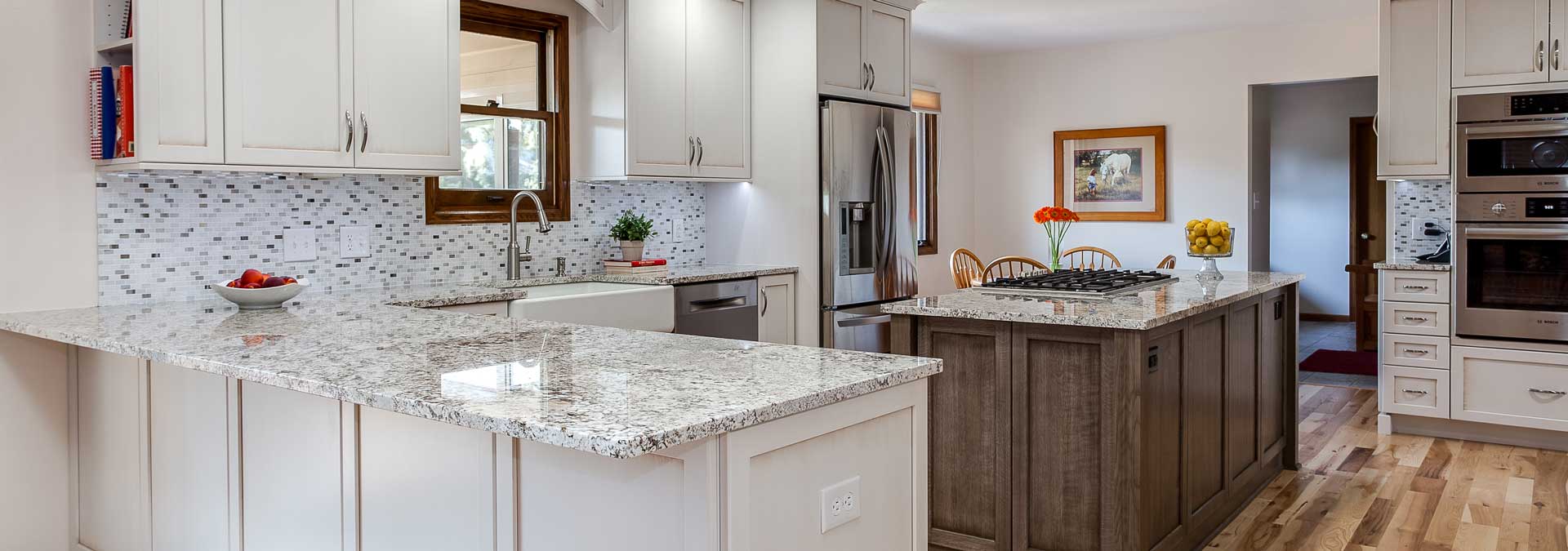We’ve heard that saying growing up but it’s particularly important when you are dealing with the most used and valuable space in your home, your kitchen. Necessity truly has been the mother of invention during the COVID-19 crisis. When our showroom team and our customers were under stay-at-home orders, we had to pivot to respond to the multiple requests from homeowners in Denver Colorado that realized their kitchens did not provide the functionality, aesthetic or lifestyle that they wanted. Being stuck at home for an extended period was eye-opening and they found they wanted a change.

The COVID-19 emergency orders to stay at home resulted in our showroom providing homeowners the necessary tools to measure their kitchens, which enabled our designers to develop preliminary plans and move the renovation process forward. Measurements provide a road map and allow a talented, experienced designer to determine how to maximize space for efficiency and aesthetic impact.
Measuring space remotely and conducting initial interactions via video calls will continue into the foreseeable future because it saves time, is easy and convenient, and, most importantly, it works. Remote measuring involves:
- Measure the height of the space(s), from floor to ceiling, affected by the project. Note the measurement(s), with labels for each space, on the template.
- Identify any rooms and/or spaces directly above and directly below where the project would take place.
- Sketch a rough layout of the space(s) affected by the project on the template. It’s a grid format with each square representing one foot. Measure the overall dimensions from wall to wall of the entire space and note each wall’s measurements on the layout.
- Make a video of the space and take a 360-degree photo.
- Label all windows, doorways and appliances on the grid.
- Measure the length, width and height of an island or peninsula.
- Measure the width and height of all windows in the kitchen.
- Measure the width and height of all doors in the kitchen.
These measurements, videos and images provide sufficient information to develop preliminary design concepts that we can present virtually or during an appointment at our showroom
The Golden Triangle of Your Kitchen
The three main areas of a kitchen, referred to as the golden triangle, include the sink, the refrigerator and the range, cooktop or cooking area. The sink should ideally be between the refrigerator and the stove. Each leg of the triangle should be between four and nine feet, and the total perimeter of the triangle should be between 13 and 26 feet.
The kitchen triangle has evolved as habits and lifestyle needs have changed. We ask homeowners numerous questions to learn exactly how they will use the kitchen. We like to know how often they cook, how many family members are involved in meal preparation We ask if they have a baker in the family, how often they entertain, what they want their new kitchen to do that their existing kitchen cannot and so on. Ideally, if there is a baker in the family, the design should allow for a zone that incorporates all of the tools needed for baking, such as pie tins, measuring cups and spoons, rolling pins and baking sheets located near the pantry or the oven.
The area designated for meal preparation should be located near the sink and house everything needed to make mouthwatering meals. The tools in meal preparation area are knives, pots, pans, pot holders, roasters, cutting boards, colanders, peelers, whisks, basters and trash can, among others. We like to provide homeowners in Denver at least 21 inches of countertop space on each side of the cooktop space permitting. Otherwise, an island or peninsula across from the cooktop makes for an ideal space for meal preparation.
Space restricted kitchens can make specifying the right size refrigerator a challenge. Standard refrigerators are 36 inches deep. However, if there is no room for a standard size, manufacturers produce models that are 24 and 30 inches deep. Many do-it-yourselfers don’t account for the swing of the refrigerator door and often find it cannot open completely because of an obstruction.
Measuring for Kitchen Storage
Storage is another essential consideration in the design of a new kitchen. How much storage space is wanted or needed will determine the size of cabinetry and the number of cabinets. Open shelving is a hot trend throughout Colorado because it provides a more open feel and enables homeowners to showcase collectibles or favorite glassware, cooking tools or whatever else they desire. Open shelving does not offer the same amount of storage space as cabinetry.
What’s the ideal layout for your new kitchen? We can help turn your dreams into reality. Give us a call at (303) 300-4400 in Denver or (303) 688-8279 in Castle Rock or contact us here to make a virtual or face-to-face appointment at either of our showrooms.




















